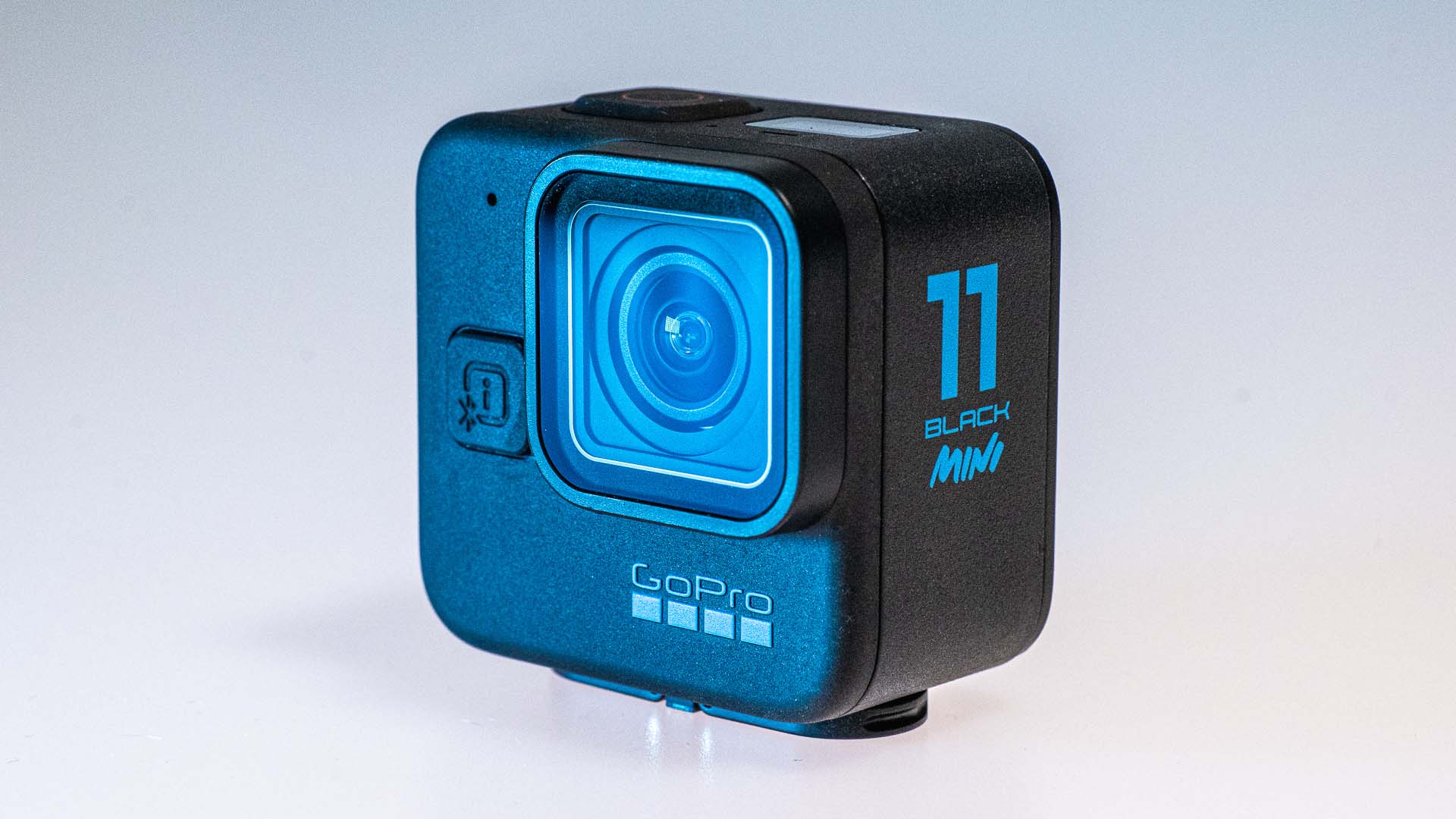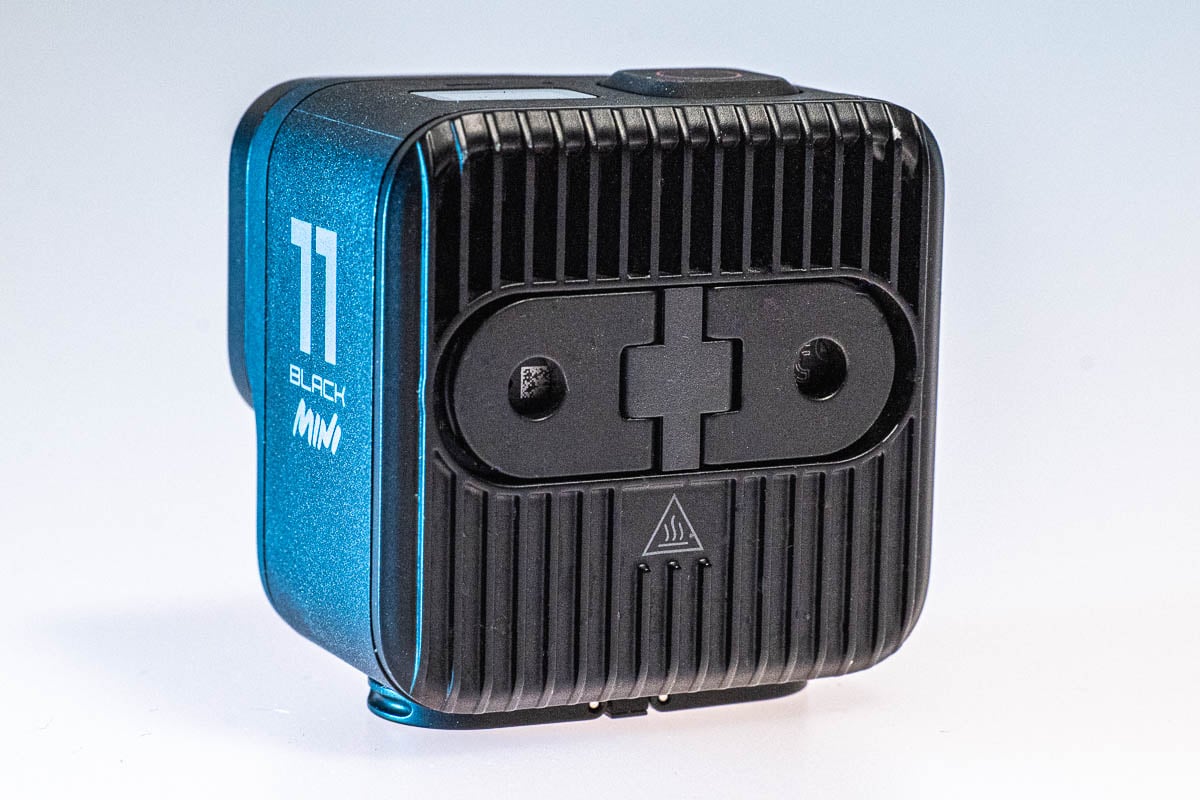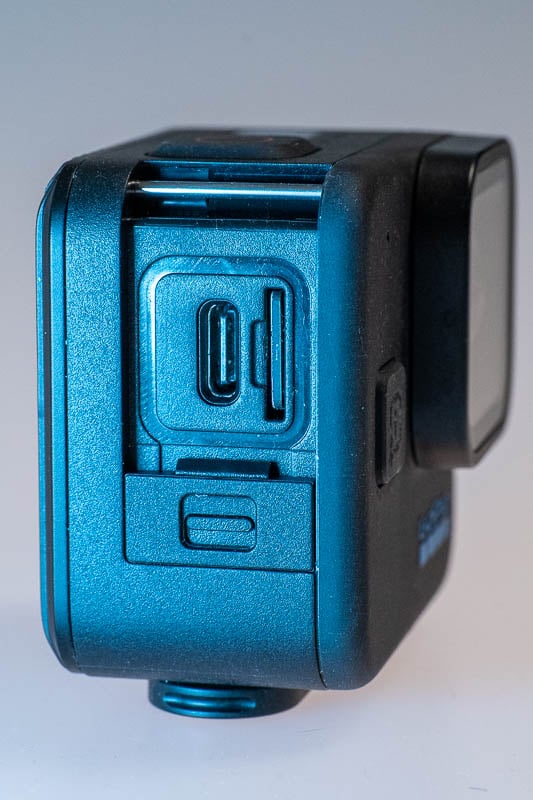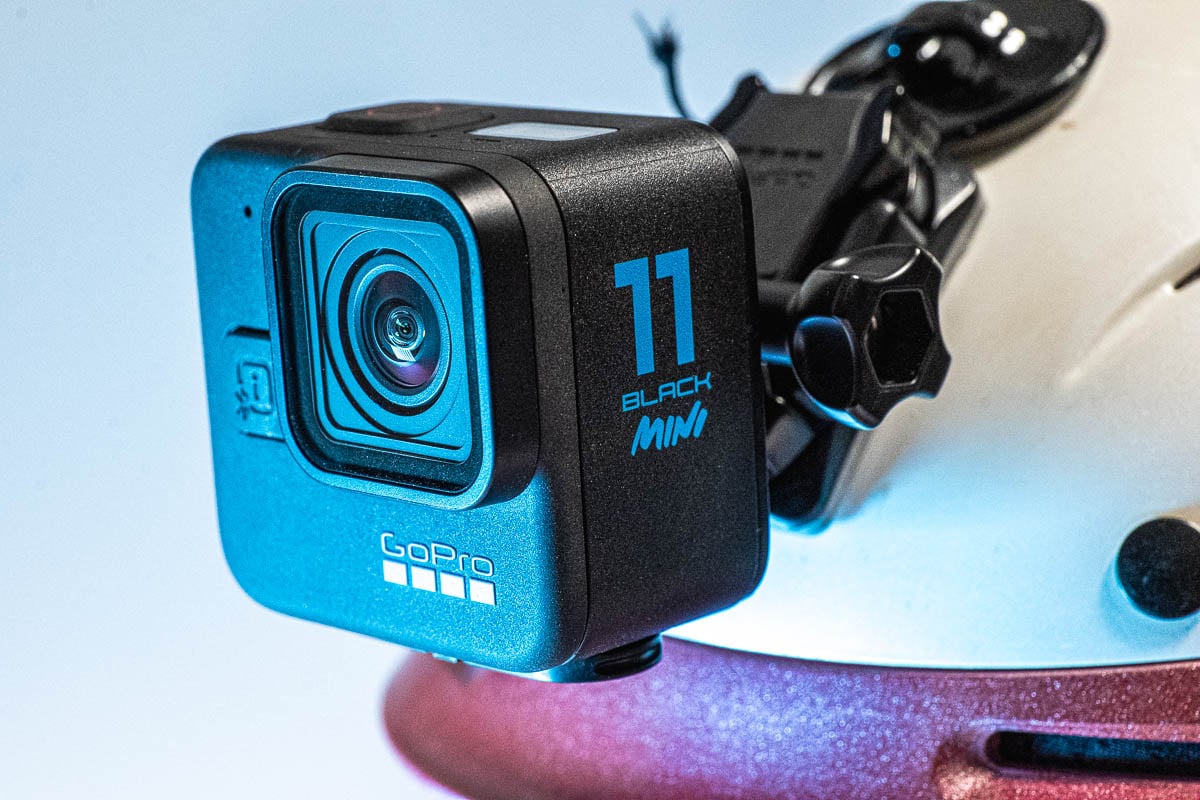
The surprise of last year's GoPro announcements was the HERO11 Mini, taking some of the concepts of the now discontinued Session series, and updating them with with modern specs. Here's the review.
The HERO11 Black, it's fair to say, is one of the best cameras GoPro has made. As the series has progressed over the years there are some standout models. There's the original HD HERO, which really focussed people's minds as to what a tiny consumer camera could do. There's the HERO4, which brought us 4K shooting, and is still used fairly widely even now. The HERO7, which introduced HyperSmooth, and then the following year's HERO8, which is certainly still a standout camera.
However, one GoPro that was popular, and then mysteriously dropped from the range, was the Session. Those who used the Session series lament its passing. It was an extremely compact device with a fixed battery, but the convenience of using it outweighed any power limitations.
Fast forward to now, and GoPro has reintroduced the base concept in the form of the HERO11 Black Mini. The Mini is just over half the width of the HERO11 Black, but just a tiny smidgen taller in height. It has a fixed 1500mAh battery, based upon the Enduro technology found in its larger sibling, but it eschews LCD displays on the front and rear of the device. Indeed, the only display on the 11 Mini is a tiny status and settings display on the top of the device.
Other differences are the dual folding mounting fingers. There's a pair on the base of the camera and another pair on the rear, making the camera more flexible in terms of how it is mounted. The back of the camera is designed with heatsink style finning, and in terms of controls there are only two buttons. One allows you to change shooting settings and the mode of the camera, while the other is a record button. The HERO11 Mini has been designed for one touch operation by simply pressing the record button to turn it on and start filming, and then again to stop and turn it off automatically.

The rear of the HERO11 Black Mini showing the alternative mounting fingers and heatsink style design
Why get the HERO11 Mini?
Because the HERO11 Mini isn't as small as the old Session series there have been questions online about the purpose of buying it. From my own perspective it is a much neater device to have mounted on a helmet or a boat. It isn't hugely lighter than the HERO11 Black. I weighed the Mini at 133g vs 154g of the standard HERO11. However, it is nice to have the choice of mounting fingers, and the ones that aren't being used can be employed as a tether point.
For FPV and placing the camera in vulnerable positions, the Mini is more rugged than the standard camera because there are no LCD screens to break. On the base camera, the LCD displays are pretty tough, but if they take a large enough hit, they will crack. With the risk of crashes in FPV, or placing the camera in the line of fire from flying stones, such as the side of a car rally stage, the Mini will take those hits with a lot less user stressing than the standard camera. The lens cover is the same replaceable, hydrophobic model used on the normal camera.

The side hatch (with the door removed) showing the USB-C port and SD card slot
Capability differences
The HERO11 Black Mini features the same video shooting modes as the HERO11 Black, including the high frame rate abilities. What it lacks is a stills mode, which isn't too much of an omission since there's no LCD screen to frame things with, and in 10-bit mode you can take some nice, high resolution grabs from the video.
Speaking of framing, this is one of the main drawbacks of the camera. In order to precisely frame a shot you'll need to use the Quik app to see the camera's view. That said, most of the uses the Mini will be employed for will be POV or as a stunt camera, so the need to use the app for framing should be minimal.
At first, you might think that the fixed battery is quite limiting. However, in real world use I've found the camera to last longer than you might think, at around an hour or so. If you use the Mini when you think interesting things will happen rather than just leaving it on record and forgetting about it, you'll do pretty well in terms of how much of the day it'll last. As a result of its run time, there's not much point in using anything more than a 64GB card with it, which will match the camera's battery times pretty closely.
There are no presets in the same way as there is with the standard camera, although the Quik app does have settings available for each of the timelapse and video modes. It would be nice to have presets available for different video modes like there are with the full size model.
Early on when the 11 Mini was released it did have a few bugs, which is one reason I haven't concluded my review until now. Since its release there has been a couple of firmware updates, and the most recent one appears to have made the camera's operation much more solid, although sometimes when I've been charging it, the light has remained lit and I've have to hold down the front and record button for a few seconds to reset it. Hopefully this one remaining bug will be sorted in another update, although it doesn't affect general operation.

The alternative mounting fingers position allows for lower profile attachment to helmets
Conclusions
For some, the HERO11 Mini might not make immediate sense, but as a second HERO camera in conditions where you don't need the LCD screen, or the risk of damage it brings, the Mini actually makes perfect sense. Indeed, in online discussions I've had about the camera, for every doubter there have been multiples of people who have pointed out that the Mini is perfect for their particular use case, whether that's FPV or high risk mounting in other scenarios.
In situations where the camera won't be used around water, it can be powered for longer periods using its USB-C port, so the limitations of its internal battery can be overcome in some circumstances, and the image quality it produces, including 10-bit modes, is exactly the same as the standard HERO11 Black. The settings display on the camera itself is difficult to see, but in with the type of use the camera is aimed at, this is pretty much a set once and forget affair. If you change settings a lot I'd recommend getting the standard camera.
The HERO11 Mini is available with a GoPro subscription for £299. As I've mentioned previously, you might as well get the subscription offer, since it effectively comes free with the camera, and you can cancel it if you don't use it with no penalties, so it's a bit of a no-brainer.
Tags: Production Action cameras FPV


Comments